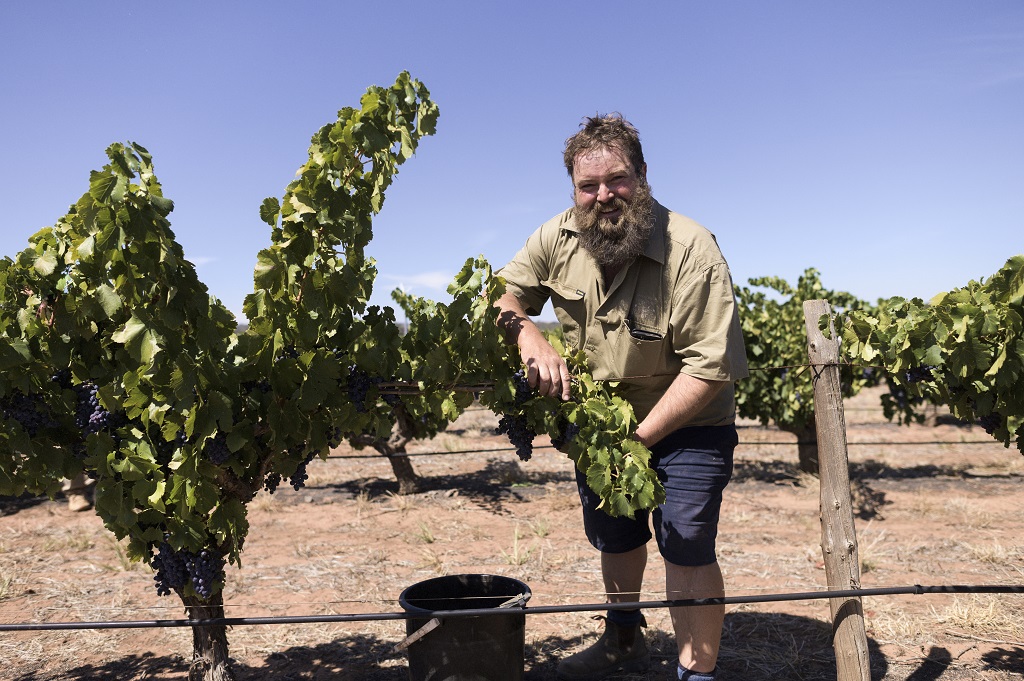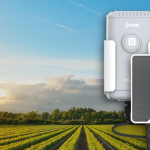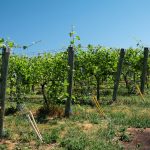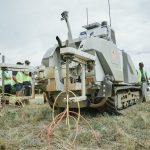Adrian Hoffman, Dallwitz Block Vineyard, Barossa. Image courtesy Young Gun of Wine
The 4th Annual Vineyard of the Year Awards list of Australia’s top winegrowers has just landed. The Vineyard of the Year Awards were created in 2020 to advance the regional identity of Australian wine and promote leading edge sustainability and innovation in winegrowing.
“I can’t believe we’re into the fourth year of these awards! And I can’t believe we’re still talking about Australia’s winegrowing community facing unprecedented challenges,” said awards panellist Max Allen.
“The pandemic might be over, the bushfires and floods may have receded, but there’s still plenty to worry about: uncertain weather patterns, global oversupply, rising costs and dwindling returns, structural imbalance and poor industry governance – the list goes on.”
“That’s why the vineyard of the year awards – in my humble opinion – are so important. They provide shining examples of innovative ideas, leading-edge practice, and sustainable business. Collectively, they offer a ray of hope: by highlighting regenerative viticulture, by championing our best growers and viticulturists and vignerons, we can remind ourselves that growing grapes and making wine is a long-term game that requires resilience and optimism and ingenuity – all of which are on display in the list of this year’s top growers.”
With over 6,000 grapegrowers, picking the top vineyards in Australia is no easy task.
Inundated with entries since July 2023, Young Gun of Wine and the judging panel spent months narrowing the field to the 41 that best exemplified the values of sustainability, innovation, provenance and growing great wine, with a process that includes site inspections of a random sample of vineyards across the country.
To judge the awards, a group of leading viticulturists were enlisted to personally review all the applicants. Prue Henschke, Dr Kerry DeGaris, Richard Leask and Dr Colin McBryde joined Max Allen in selecting the list of 41 top winegrowers.
Prue Henschke, who joined the panel in 2023, congratulated the top vineyards on their achievements.
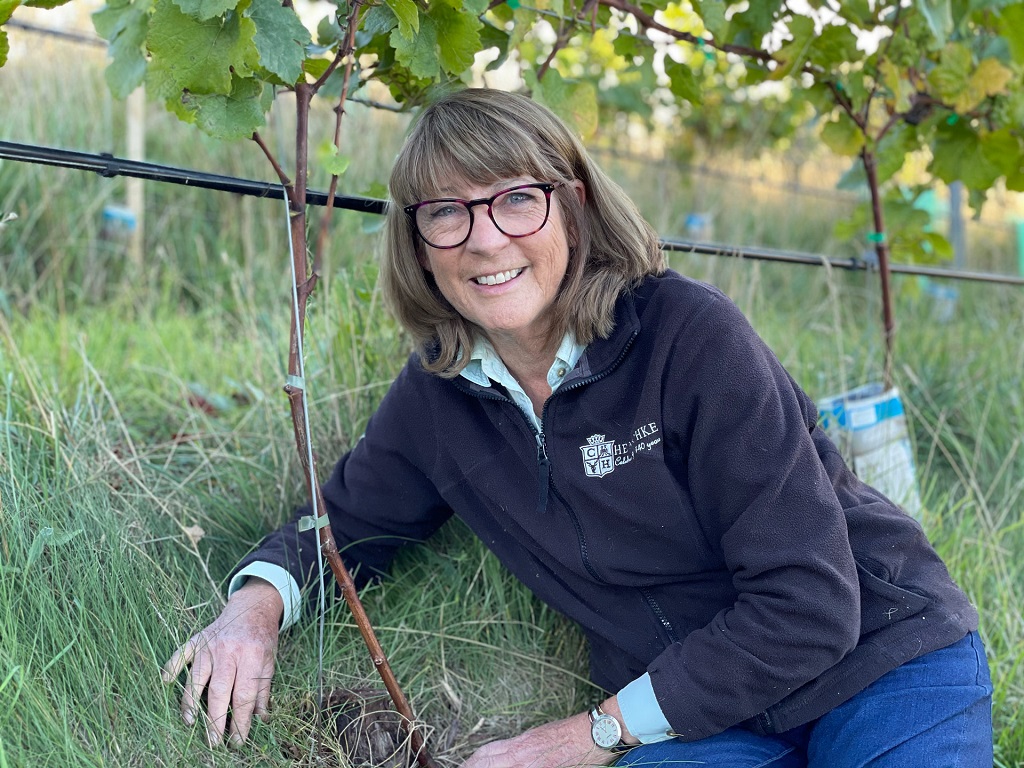
“It’s through uncovering and sharing the stories found with these top vineyards and growers, that we can promote change. Promote change to better care for and regenerate the environment as well as broader sustainability – communities and other industries are connected to winegrowers, so they have a social and economic impact too. Congratulations to the achievements of these vineyards. They are leading the way!”
The 41 top growers in the 4th Annual Vineyard of the Year Awards include 18 from South Australia, nine from Victoria, seven from New South Wales/ACT, one from Tasmania four from Western Australia, and three from Tasmania.
Two vineyards in the NSW Hilltops have particular reason to feel good about this year’s harvest, with both Barwang Wines and Freeman Vineyards declared finalists in the competition.
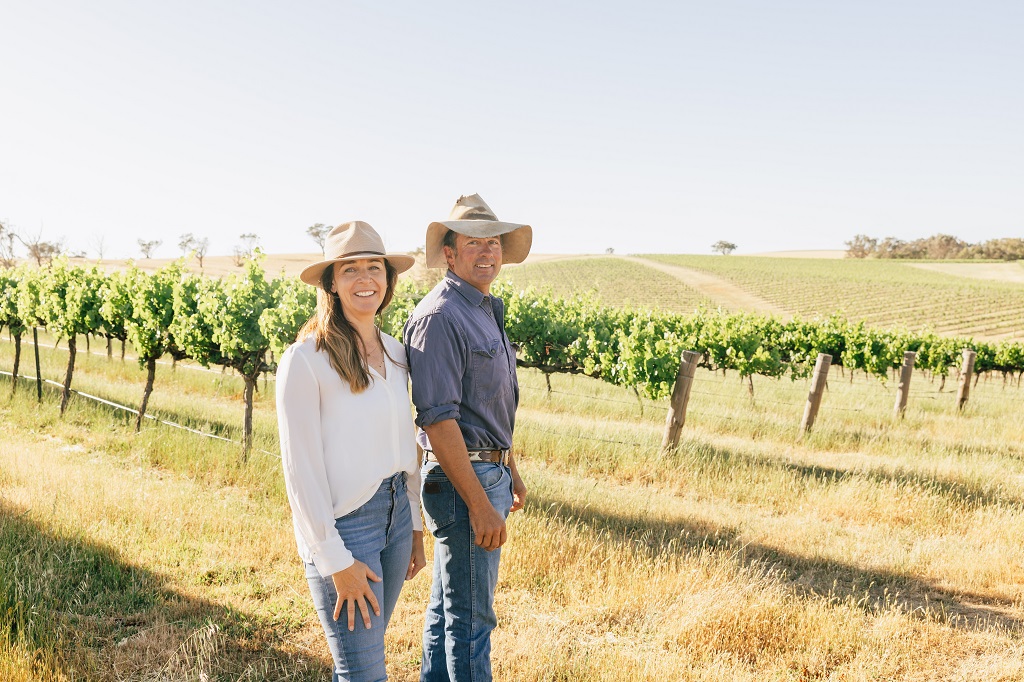
“These hills grow top-class grain, prime lambs and the district also harvests terrific quality cherries and stone fruit, but it’s the local viticultural heritage that really excites us,” said James Bowman, co-owner of Barwang Vineyard and vice-president of Hilltops Wine.
“To have two finalists in these national awards is a terrific outcome for our small wine region that is increasingly earning strong recognition for its viticulture, mature vineyards and innovation, especially with Italian varieties.”
The 2024 Vineyard of the Year Awards category winners will be announced in Melbourne in mid-June in conjunction with a series of trade tastings in Brisbane, Sydney and Melbourne.
The 4th Annual Vineyard of the Year Awards
(In state and alphabetical order)
South Australia
– Alkina Wine Estate, Barossa Valley (Johnny Schuster & Amelia Nolan)
– Ashton Hills, Piccadilly Valley (Jose Neves & Anton Groffen)
– Cape Jaffa Wines Vineyard, Mount Benson (Hamish Stevenson)
– Castine-Morella Vineyard, Clare Valley (Ben Castine & Jess Smythe-Castine)
– Dallwitz Block Vineyard, Barossa (Adrian Hoffman)
– Inkwell Vineyard, McLaren Vale (Irina Santiago-Brown)
– Koomilya Vineyard, McLaren Vale (Stephen Pannell)
– Land of Tomorrow – Grindstone Vineyard, Wrattonbully (Susie Harris)
– Longview Vineyard, Adelaide Hills (Chris Mein)
– Ngeringa – Summit Vineyard, Adeliade Hills (Erinn Klein)
– Orbis Wines Vineyard, McLaren Vale (Macca Mackenzie, Brad Moyes & Lauren Langfield)
– Paxton Wines – Thomas Block Vineyard, McLaren Vale (David Paxton)
– Penley Estate, Coonawarra (Hans Loder)
– Smallfry Wines – Vine Vale Vineyard, Barossa Valley (Wayne Ahrens & Suzi Hilder)
– Starrs Reach Vineyard, Riverland (Sheridan Alm)
– Stonegarden, Eden Valley (Glen Monaghan)
– Wirra Wirra Vineyard, McLaren Vale (Jose Neves & Anton Groffen)
– Yalumba – The Tri-Centenary Vineyard, Barossa Valley (Jana Shepherd)
Victoria
– Chalmers Heathcote Vineyard, Heathcote (Troy McInnes)
– Crittenden Home Vineyard, Mornington Peninsula (Rollo Crittenden)
– Glenhope Vineyard, Macedon Ranges (Scott Harrington)
– Gorton Drive Estate, Swan Hill (Chris Dent)
– Lakeside Vineyard – Lake Moodemere Estate, Rutherglen (Joel Chambers)
– Portsea Estate – Main Ridge Vineyard, Mornington Peninsula (Matt Lugg)
– Foxeys Hangout – Scotsworth Farm, Mornington Peninsula (Chris Strickland)
– Syrahmi Home Block Vineyard, Heathcote (Adam Foster)
– Yarra Yering, Yarra Valley (Andrew George)
New South Wales/ACT
– Barwang Vineyard, Hilltops (James Bowman & Scott Douglas)
– Freeman – Altura Vineyard, Hilltops (Brian Freeman)
– Brokenwood – Graveyard Vineyard, Hunter Valley (Katrina Barry)
– Keith Tulloch – Field of Mars Vineyard, Hunter Valley (Brent Hutton)
– Stockman’s Ridge Wines, Orange (Jonathan Hambrook)
– Topper’s Mountain Vineyard, New England (Mark Kirkby)
– Vinden Wines Somerset Vineyard, Pokolbin, Hunter Valley (Angus Vinden)
Western Australia
– 467 Twenty Four Road, Margaret River (Claudia Gant)
– Gralyn Estate, Margaret River (Scott Baxter)
– McHenry Hohnen – Hazel’s Vineyard, Margaret River (Simon Keall)
– Riversdale Vineyard, Frankland River (Larry Cherubino, Jonno Reeve & Dwayne Loitering)
Tasmania
– Mewstone, Tasmania (Alex McLean)
– Stargazer – Palisander Vineyard, Tasmania (Bryn Williams)
– Small Wonder, Tasmania (Wayne Nunn & Dylan Grigg)
Shared themes among Australia’s top vineyards
Old vines, historic vineyards & DNA discoveries
We have finalists that are caring for old vines, some are those they planted themselves that have reached significant maturity and are now tended to by two generations of vignerons. Others are picking up the legacy from generations past to care for 19th century vines – some of the oldest in the world. DNA testing has discovered varieties unseen in Australia.
Using technology
Technology, once associated with the industrialisation of wine, is now somewhat of a saviour. Ag-tech is being used for precision farming, which reduces diesel use and compaction from unnecessary tractor passes. Targeted water and nutrition applications result in reduced overall inputs, healthier vines and fruit, and better wine. It’s also giving viticulturists at large vineyards the ability to have a small vineyard mentality, fine-tuning the needs of micro-parcels identified through satellite or drone mapping.
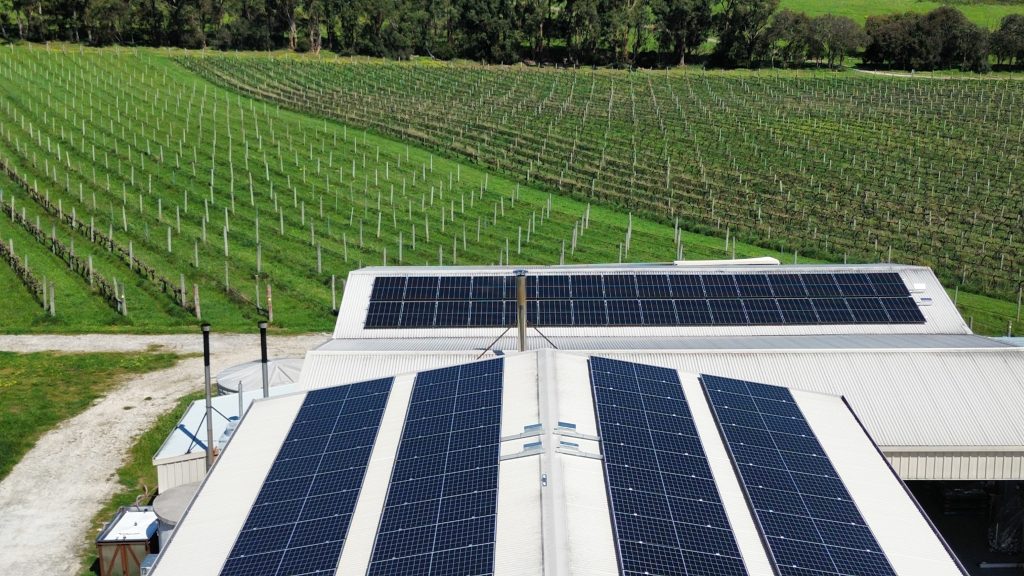
Getting solar, closing the loop & going off grid
We have so many finalists that are working to keep all operations onsite. More and more growers are working to close the loop, relying on ‘waste’ products, from water to compost to packaging, to cycle back into their system, with external inputs drastically reduced, and, in some cases, all but eliminated. They are making own compost and mulch. Solar panels are an increasingly common sight at vineyards, with growers working to internalise all their power needs, going off-grid and even feeding renewable energy back into the system.
Micro mapping the terroirs
Growers are looking at their land at an almost microscopic level. One vineyard analysed 140 soil cores before planting vines, while another dug more than 160 pits map the geology with grape parcels vinified and matured separately as they connect the characters of the wine to the terrain, while another uses map solar radiation technology to segment the vineyard – all identifying micro terroirs.
Pioneers of diverse & alternative grape varieties
There are pioneers of alternative varieties in this country, working with the climate rather than against it to find the most suitable vines. Those grapes are ones that tolerate heat or are resistant to disease, grapes that better make wine that is naturally balanced without having to tinker in the winery.
Vineyards are being turned into carbon sinks
Regenerative agriculture is seeing many growers move towards carbon neutrality. And it’s not just between the rows, with non-vineyard land receiving just as much focus by replanting native vegetation, increasing fauna populations and reinstating natural waterways.
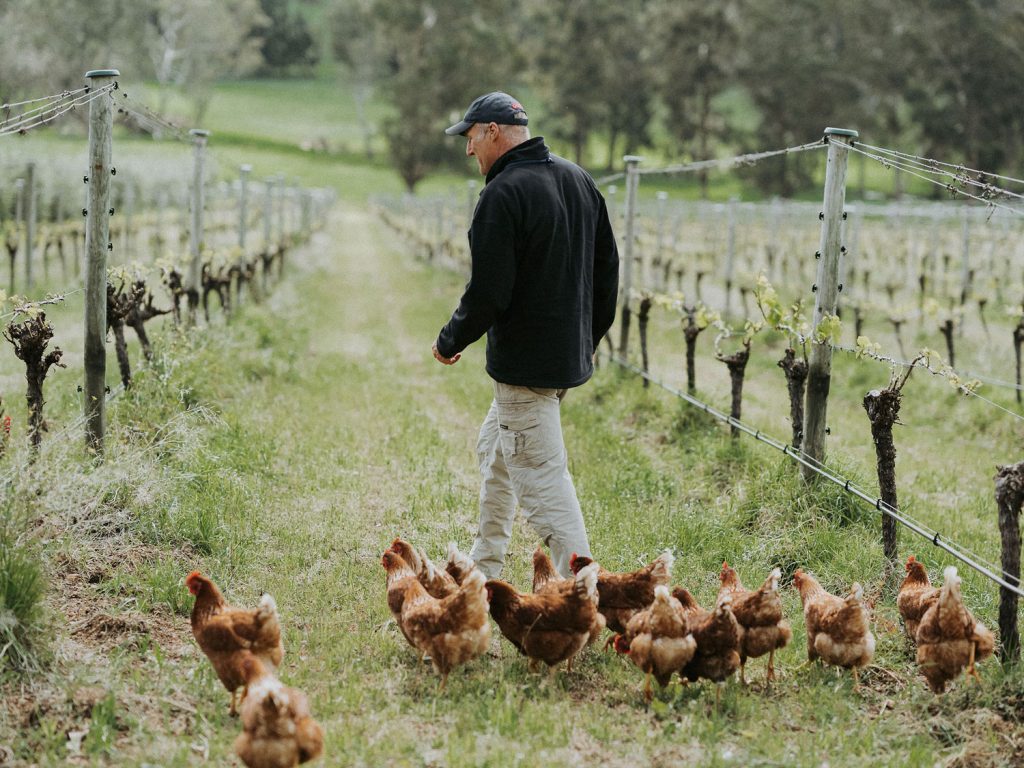
Natural pest and weed control take the lead
Growers are banishing chemical pest and weed control, enlisting ducks and chickens to control snails and other pests. Microbat boxes, insects attracted to increased biodiversity and habitat for natural predators are completing the picture. Sheep and other livestock are also being introduced to keep grasses down, minimising the need for mechanised weeding or mowing, which reduces diesel use, soil compaction and minimises labour that could be best allocated to other tasks.
For the birds
A perennial problem for growers pre-harvest is the ripening fruit attracting birds. They’re hanging up the shotgun and leaving cumbersome nets in the shed, instead turning to drones and lasers to scare off aerial pests, while raptor perches are attracting natural predators, which are somewhat more intimidating than scarecrows. While another has a specially bred flock of pigeons to deter a particular breed of bird pests.
Economic sustainability
It’s no secret that growing wine grapes is not the easiest way to make a living, and some growers are insulating themselves with practices that also benefit the vines. Rotational grazing provides weed and grass control, adds nutrition back into the soil through droppings and provides an income stream from the grazing animals. Cellar doors, accommodation, events, mixed farming, seed banks, grapevine nurseries, making other beverage products, and market garden subscriptions, are all examples of ideas to leverage and cross pollinate their winegrowing businesses to ensure a successful future.
Are you a Daily Wine News subscriber? If not, click here to join our mailing list. It’s free!
